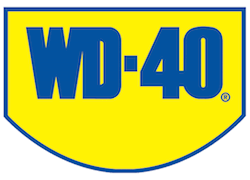The other day I picked up a can of WD-40, and I got to thinking. I know WD stands for “water displacement,” but what does the 40 stand for? This started to play on my mind so I had to find out. Thanks to this new-fangled thing, call the internet and Google it was not long before I had my answer.
In 1953, a small company called the Rocket Chemical Company was trying to come up with a rust-prevention solvents and degreasers for use in the aerospace industry. After 39 failed attempts the hit pay dirt on the 40th attempt. WD-40 was used by Convair on the outer skin of the Atlas Missiles to protect them from rust and corrosion.
A few years later in 1958 company founder Norm Larsen experimented with putting WD-40 into spray cans, thinking that consumers might find a use for the product at home as some of the employees had. The product made its first appearance on store shelves in San Diego. In 1969, the company was renamed after its one and only product. What started out as the Rocket Chemical Company is now known as WD-40 Company, Inc. With about 1 million cans of WD-40 are sold each week I think it is safe to say WD-40 will be around for years to come.



Its always a good day when you learn something new. Thanks guys
The miracle drug in the workshop. Thanks for the smile.
Very interesting story. Nice to know the background
I remember watching a TV show on discovery or one of those channels years ago about WD-40 but I have forgot why it was called WD-40 now I know.TIA
Great on on the write up Carroll!! We’ve also used wd-40 to clean up my uncles grave stone and it comes out pretty nice. T.I.A!!!!
cool stuff.. its amazing that a product can be relevant for 62 years and still be selling so strong! 1 million cans a week!! thats crazy!
its actually really crazy, give that are much better products out there. but everyone knows and trusts WD-40.
Dont forget nowadays they have much more than good ole WD-40 under the WD-40 umbrella as far as types of things offered,their WD-40 specialist line is pretty awesome.
WD-40 is a peculiar product and it seems to me that it is widely used for very inappropriate applications.
So, what does it contain? I am not certain, as far as a rigorous chemical analysis might show, but I have some reasonable guesses. Years ago, a friend of mine showed me a stainless steel bowl with some congealed residue in the bottom and asked me to guess what it was. I looked at the yellowish gel with a wrinkly surface, smelled it, and guessed that it was boiled linseed oil that had been left out. That is exactly what it smelled like. My friend told me that it was WD-40. OH-MY!! Residue like that is very, very bad in mechanisms as it will definitely gum up the works. So, my guess about the ingredients for WD-40 is boiled linseed oil, highly diluted with a deodorized solvent like Stoddard solvent or deodorized kerosene, with a bit of fragrance added to conceal the characteristic odors, and maybe even a trace of some rust inhibitor like a VPI. That would make a sort of penetrating oil that would leave a film after the solvent evaporates that won’t wash off with water. It will readily wet and adhere to metal surfaces and will soak into light rust. The film will partially harden slowly on exposure to air. It would actually be a form of very thin, penetrating, slow drying, soft setting, unpigmented paint. So for the original intended purpose, it would work very well. For other applications, not so much. For example, don’t ever use it in a lock or delicate mechanism. It will surely gum up the works, and experience shows that this is indeed the case.
So, use it as a penetrating oil to aid disassembly, although 50/50 transmission fluid and mineral spirits (or acetone) is better, and so are many other products sold as penetrants such as Kroil, LPS-3 and TKX, Liquid Wrench, and many others.
Do Use it to protect *non-moving*, unpainted items that are subject to weather exposure, since the oxidized oil film is reasonable durable but not abrasion resistant.
Don’t use it as a lubricant. It is *NOT* a good lubricant. Where you need a durable lubricating film that might be exposed to the weather, use motorcycle chain lube (where you need penetration) or open gear lube. They stay put but don’t congeal, and provide superior lubricating properties. I use motorcycle chain lube on car door hinges, and the bushings don’t wear out.
Sorry WD… You’re just not as great as you think. You are not one size fits all, even though you have tried.